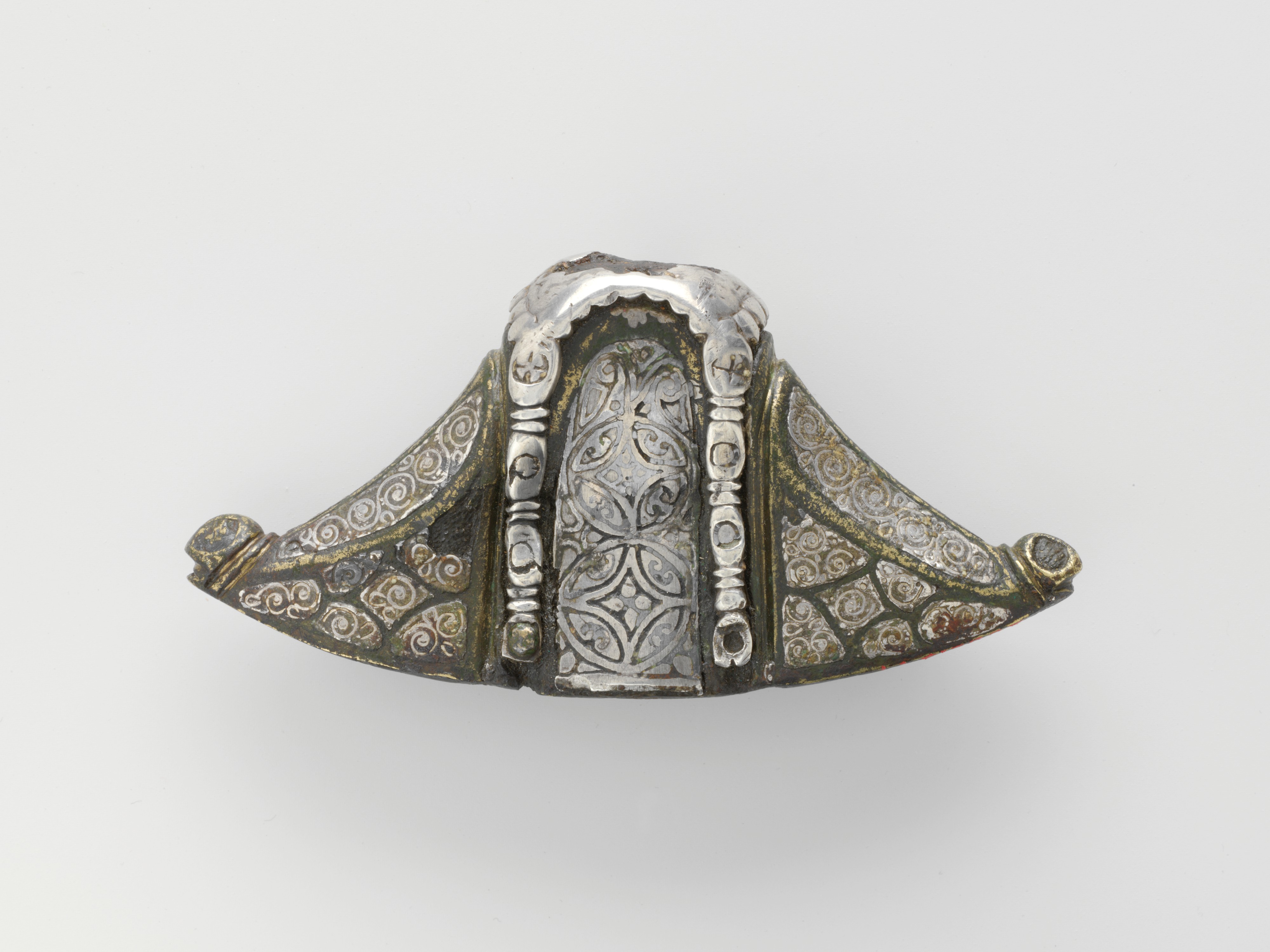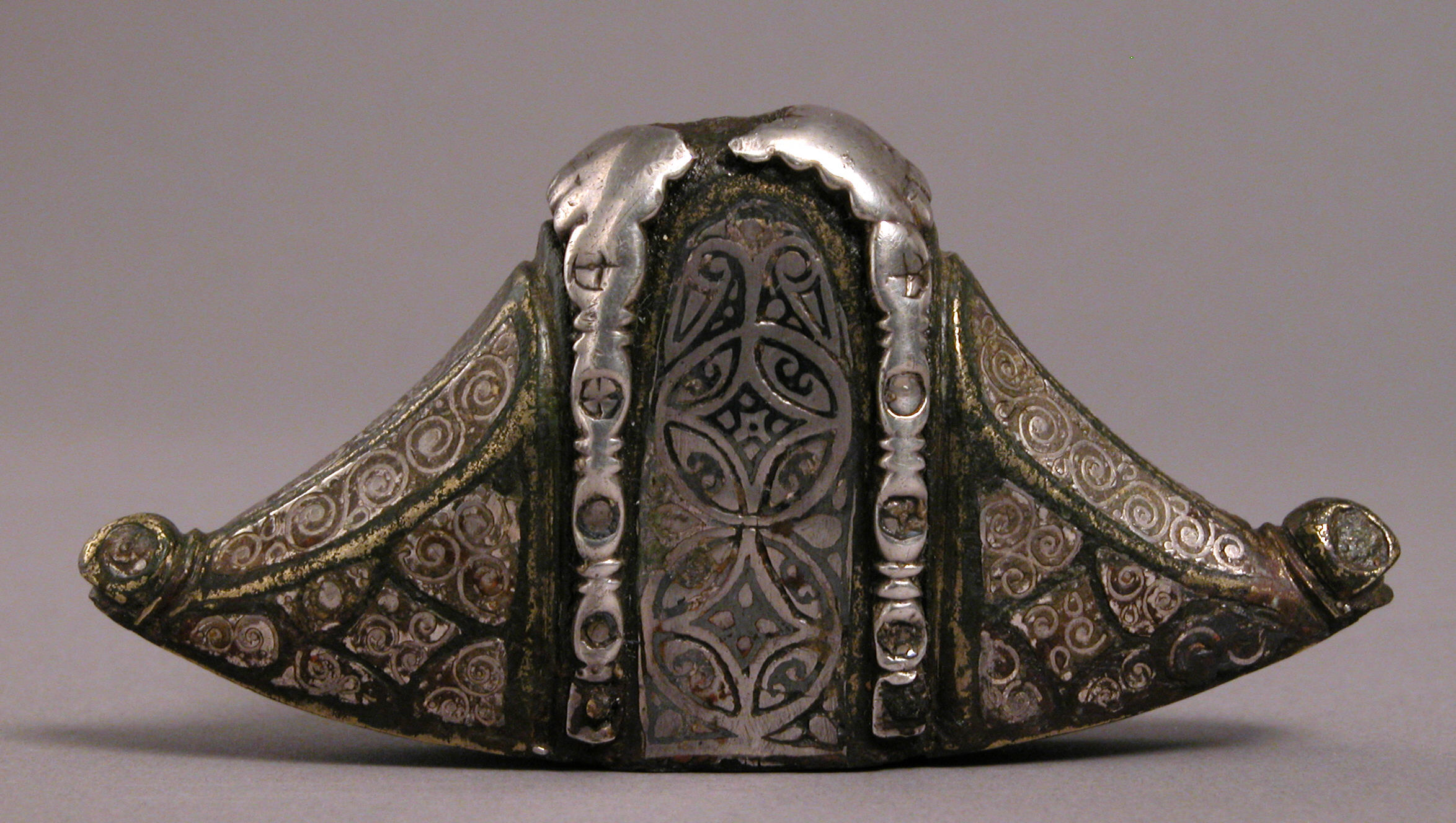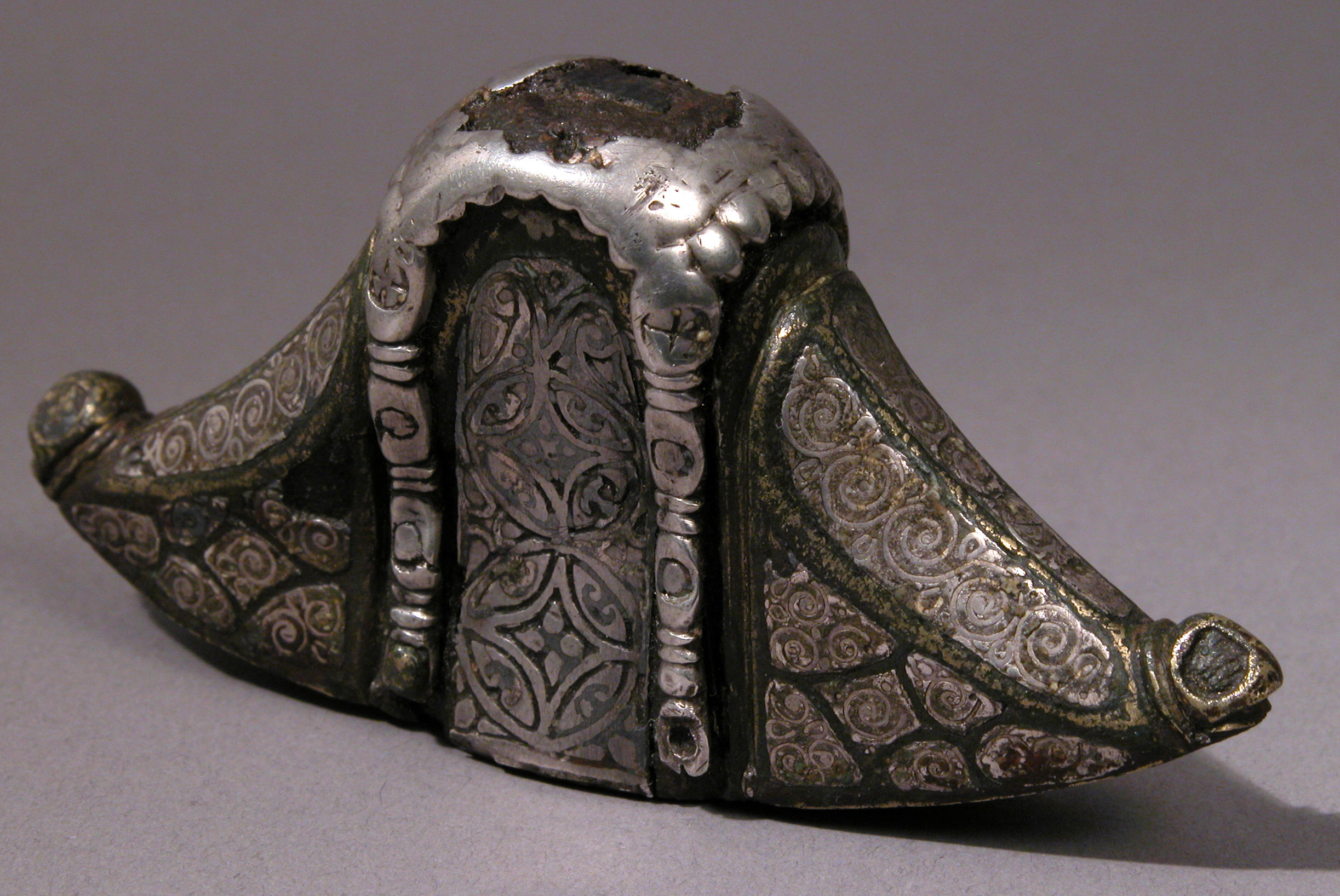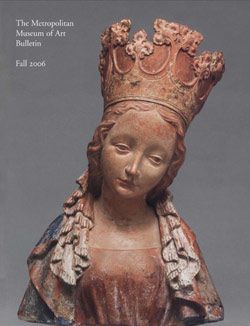Sword Pommel
This handsome sword pommel is one of the finest surviving fragments of Anglo-Saxon goldsmith work. The pommel's quasi-triangular shell, of cast copper alloy, is decorated with silver panels inlaid with niello patterns and framed with silver strips. The two end terminals are animal heads. Although the "cocked-hat" form and the design of the panels look back to late eighth-century sword pommels (examples of which from Windsor, Chiswick, Eyot, and Saint Ninian's Isle are preserved in London, Edinburgh and Oxford), the silver-wire and niello technique used to create the inlaid running spiral patterns on the curved sides seems to have been a specialty of East Anglian metalworkers in the ninth century, during the reign of King Alfred the Great (r. 849–99). Some of the niello designs are similar to those on the well-known Fuller brooch in the British Museum, London, which was made in the late ninth century, perhaps in Alfred's court workshop.
Due to rights restrictions, this image cannot be enlarged, viewed at full screen, or downloaded.
This artwork is meant to be viewed from right to left. Scroll left to view more.








